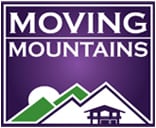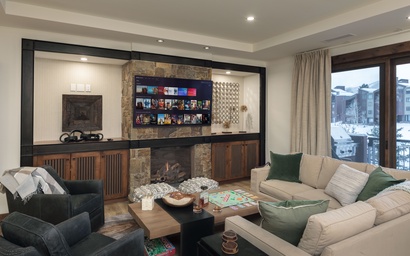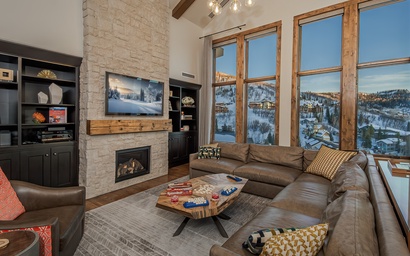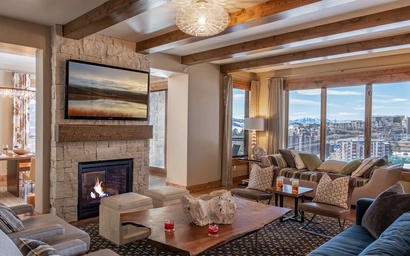IT'S THE BEST OF SNOW. IT'S THE WORST OF SNOW. (To paraphrase Charles Dickens from A Tale of Two Cities.)
You probably know what I mean. Impossible chunky ice early in the morning, frozen death cookies, yesterday’s slush come back to haunt you in the form of solid chips and ruts and waves, an invitation to feel awkward no matter how good you really are....
And then, ’round 10:30 or 11:00 in the morning, spring snow starts to soften, to give, to relax. And skiers start to relax as well. Spring skiing changes from chore to choice, to pure pleasure. The window of opportunity opens wide and we jump through, guiding beautiful fast turns through yielding but solid snow that, for a few hours at least, seems to get better and better and better.
Then, not suddenly, not all at once, but immeasurably, progressively, the snow goes to heck! Afternoon changes spring snow from soft to too soft, to soggy, even to rotten, under the relentless force of a high April sun. And finally we ski down to the base through a sea of slush, knowing that we should have quit an hour earlier, before the snow got so sloppy. In a word, classic spring conditions.
Savvy spring skiers, don’t get to the lifts too early. And they don’t feel they have to keep skiing until the lifts close either. Timing is everything. In spring, especially in late spring, more than at any other time during the season, the quality of your ski experience depends on your timing. It’s not just a matter of giving the slopes an extra hour or so to start softening. Equally important is your choice of where to ski, when. Spring strategy is simple: follow the sun. Most, not all, ski areas face north. And that’s no accident. Snow lasts longer, piles up deeper, and - because it receives less sun - snow on north-facing slopes stays cold and dry longer, and skis better....in winter, that is. But in spring, shadowy north-facing slopes are no blessing early in the morning. Start your spring ski day on east-facing slopes. Then follow the sun all day long. Not everyone has a clear, intuitive sense of just where and how the sun moves around their favorite ski area. In doubt? Ask a ski pro. Instructors make a point of figuring out where the snow will be best, at what time of day.
If you’re skiing a big mountain, you’ll want to ski as high as possible. Especially in late spring, snow conditions are always better a few thousand feet above the valley floor. And if it’s really a big mountain, there’s another option that can be even better. Ski off piste, off the packed slopes. Head for the backcountry and enjoy the very best sort of spring snow - untracked spring snow. Pure velvet. Pure corn.
“Corn snow” is a classical skier’s phrase for what happens to the snowpack in spring. But where that name comes from is anyone’s guess. For snow to “corn up” requires a week or two of freezing nights alternating with warm, snow melting days. The snowpack changes under the action of this daily melt / freeze cycle. Ultimately it is no longer technically snow at all. Those tiny six-sided snow crystals disappear, melting into water, then refreezing into loose granules of ice. On groomed slopes, skidding skiers tend to push the sun-softened, mid-afternoon slush into a no-man’s land of irregular troughs and waves. But outside the ski area boundaries, the snowpack surface stays mirror smooth, and under the benign influence of the mid-day sun, softens to the consistency of velvet. Ideal spring snow looks smooth and uniform, the top couple of inches are soft and yielding, but there is a solid icy base underneath. Skis grip, bend and carve beautifully on this sort of snow. On perfect corn, skiers can experience perfect arcs, perfect rebounds, a consistency and flow of movement from turn to turn that is really rare. Poetry in motion....
But you’re more likely to find such snow outside the ski area boundary ropes. Nowadays that’s not so hard to do. More and more ski areas have created “backcountry gates” or “portals” at their boundaries, rather than trying to close the backcountry off altogether as used to be the norm. At most areas, patrollers are generally willing to give you advice about where to go, and to discuss the snow conditions, and possible hazards. But the spring skier, in search of virgin corn, far from the packed slopes, has a tremendous advantage. Spring or corn snow is, generally speaking, much safer than winter snow in terms of avalanche hazard. Safer, that is, if you time your excursion for the middle of the day, when the icy snowpack has softened but is not yet soggy and wet. The rule of thumb for spring touring is this: if the skiing is good, then the spring snow is probably safe. Late afternoons are a different matter altogether. Once spring snow becomes wet, soggy, or rotten under the influence of too much sun, it has a lot of potential to run in wet-snow, point avalanches (set off by skiers or not). Snow safety is, and should be, your first concern every time you decide to leave the ski area. If you aren’t a snow and avalanche expert - and few skiers are - the very best thing to do is to discuss your proposed backcountry ski experience with a knowledgeable patroller. Ski patrol people are trained snow and avalanche experts; and they’ll welcome the opportunity to help make your backcountry ski adventure safer.
Remember. In spring, timing is everything, whether you’re inside or outside ski area boundaries. Remember to follow the sun. Plan your day to ski a given slope an hour or two after the sun has reached it. Once you’ve mastered this trick, spring could even become your favorite ski season.



















































